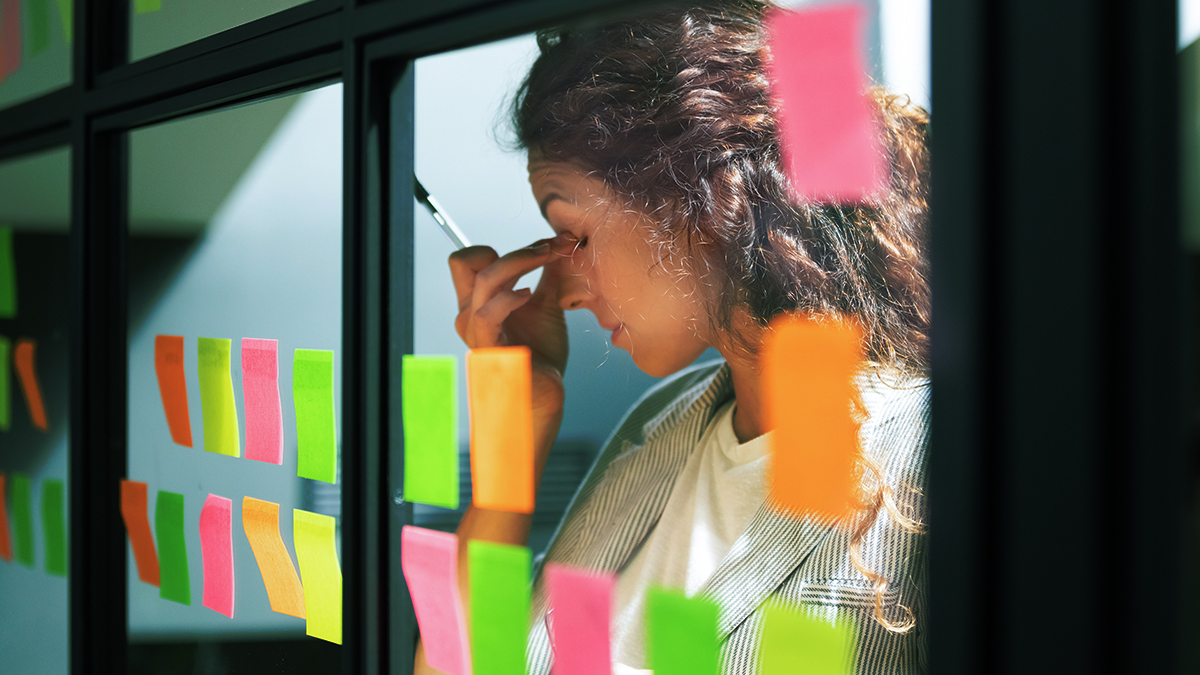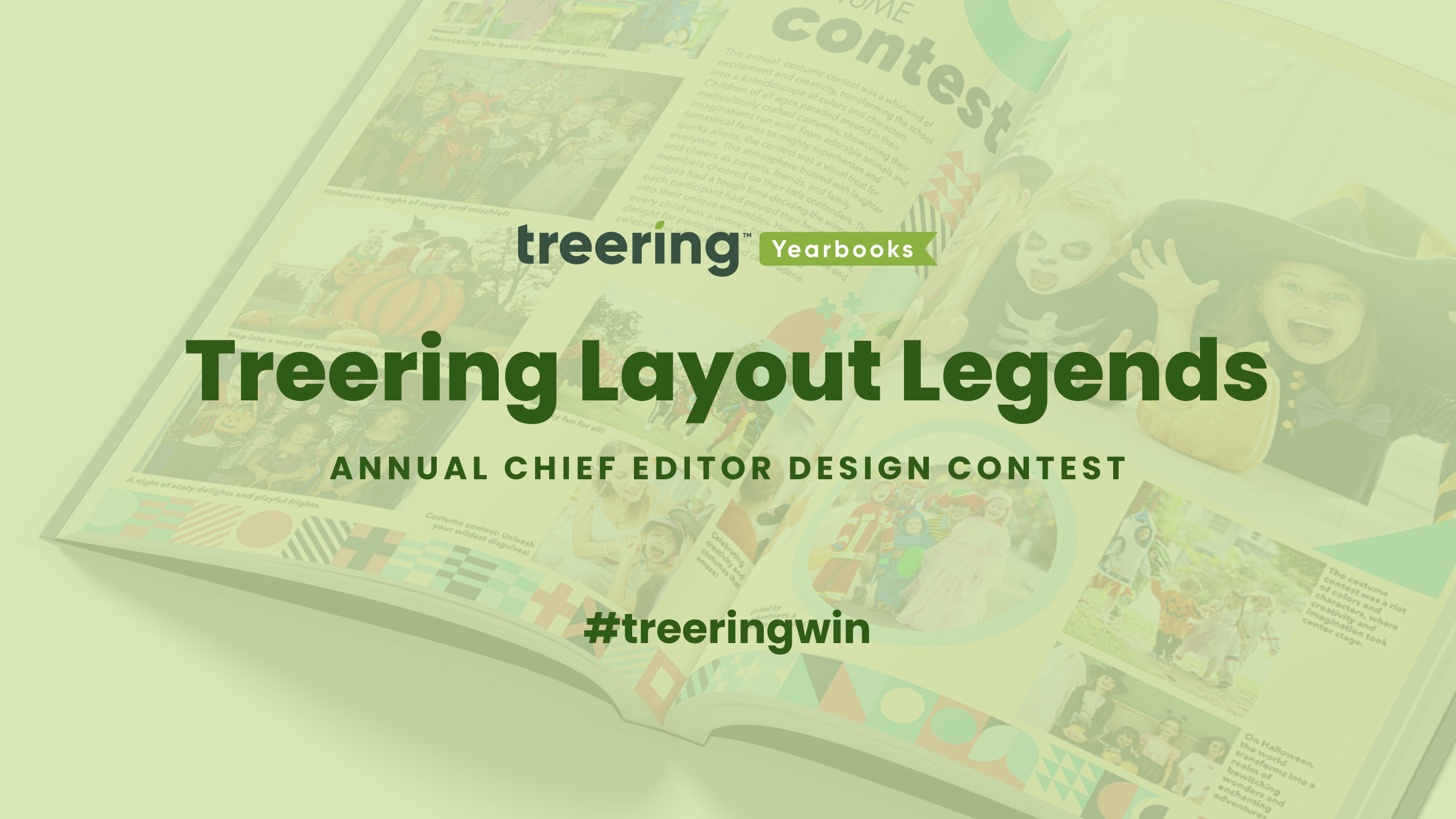Adding backgrounds to a yearbook page reminds us of that old Charles Wright tune, “Express Yourself.”
See, yearbook backgrounds are a really fun way to make your pages pop. They’ve usually got some cool visual component like a picture or a nice splash of color.
Well… they should. Unfortunately, it’s really easy to overdo it.
Suddenly, it can become difficult to fight the urge to put a mosaic of castoff pictures behind a page of well-manicured content; eventually, you’ll want add a new background to every page. Here’s the thing: yearbook backgrounds are at their best when they’ve got some room to breathe. The name of the game here is subtlety.
We’ve got some tips on how to make that happen, but our main one is this: let them be a way to express yourself, but make them serve a purpose.
The Purpose of Backgrounds for Yearbook Pages
We know it’s easy to fall in love with all the awesome background ideas you can find online. Shoot, on Pinterest alone you could probably find enough cool ideas to fill each of your school’s yearbooks for the next twelve years.
There’s a trick to narrowing that list of ideas, and it’s this: When you find a background idea that you love and can’t live without, ask yourself what purpose the background serves.
It’s a tough question, but don’t worry, there’s no “right” answer.
Your answer could be that your otherwise blah page needed a splash of color, that an incredible photo you had served as a great anchor to the page, or that you want entire sections of your yearbook (like your portraits) to stand out from the rest of your book. The one answer you don’t want to settle on, though?
“I just really like the background.”
If you keep our tips in mind, your yearbook will be full of backgrounds that complement the contents of each page, enhancing aesthetic value and, more importantly, the reader’s experience.
What Not to Do With Your Yearbook Backgrounds
The number one thing to remember when creating your school yearbook backgrounds is this: don’t let backgrounds interfere with the reader’s ability to enjoy the pictures and words on the page.
Make it as easy as possible for your reader to digest a year’s worth of memories. Overly bright or busy backgrounds — or backgrounds that “hide” your main content — will force your readers to strain their eyes. That’s no fun for anyone.
Here are a handful of the common pitfalls to watch out for that could turn your incredible page spreads into unreadable afterthoughts.
Clashing colors are your enemy
If you’re going to roll with no “backgrounds” and opt for a single color throughout, just be sure it compliments (and doesn’t clash with) your fonts and layouts. After all, a background color might look awesome on its own, but it definitely won’t if your reader can’t understand what else is going on with the page.
Avoid complexities and distractions
Of course, one of the hardest parts of designing a yearbook, a spread, or even a single page can be knowing when to stop. You might have a ton of great background ideas, but you’ll likely not get to use all of them in any one year. That’s OK. Save some for later. Because, in the words of our friend Charles Wright, “Whatever you do, do it good.”
Above all: Don’t let background obscure font
If I’ve said it once, I’ve said it a thousand times: the worst thing your background can do is obscure the copy and photos and graphic elements you and your students have worked so hard to create. And while images might stand a chance of remaining visible in the presence of an overpowering background, text almost certainly cannot. This is doubly true for body copy and captions (often the smallest typefaces on your page).
What Types of Yearbook Page Backgrounds Are There, Anyway?
In case it was unclear above, no matter whether we’re using student artwork or high-res photography, the name of the game with yearbook backgrounds is visibility.
While the most popular places to add backgrounds to school yearbooks are title pages, collage pages, and class portraits pages, just about any page in the yearbook is fair game. It just depends on what your page looks like and how you plan to use the background.
Speaking of, here are a few of the different elements you can use to create backgrounds that’ll really stand out and enhance your yearbook.
Photos
How many times have you had a photo you wanted to use in the yearbook, but every time you placed it somewhere, it didn’t seem interesting enough to stand on its own? It probably happens more than most of us would like to admit. Well, scoop it up off the cutting room floor: a background is the perfect place to use it!
Student Artwork
Students are nothing if not creative: use your yearbook’s backgrounds as a place to subtly showcase their talents. Consider having students design different borders for specific sections of the yearbook, or perhaps host an art contest in which you commission work that follows your yearbook’s theme; the results could be great, hilarious, or some combination of the two. Either way, it makes for a really fun background.
Patterns
One way to carry a theme through a yearbook is to repeatedly use minor design details on similar pages to keep them tied together and part of a group. Believe it or not, these graphics are complementary background elements. Use them to denote changes in section in place of explicit title pages. For a nice little twist on this style of layout background, have students craft their own unique patterns!
Ensuring high contrast and visibility is the first test a prospective background much pass.
You can use a handful of photographs for a background and have a page look tasteful and easy-to-read. You could use a single graphic element or garish color and have it distract from the spread entirely. It’s a careful balancing act involving a limitless number of potential design elements.
The thing to remember is this: as long as your background isn’t detracting from the reader’s enjoyment of the page, it’s doing its job. Create backgrounds that complement the spreads you’ve worked hard to put together, and your school yearbook will be a success.






